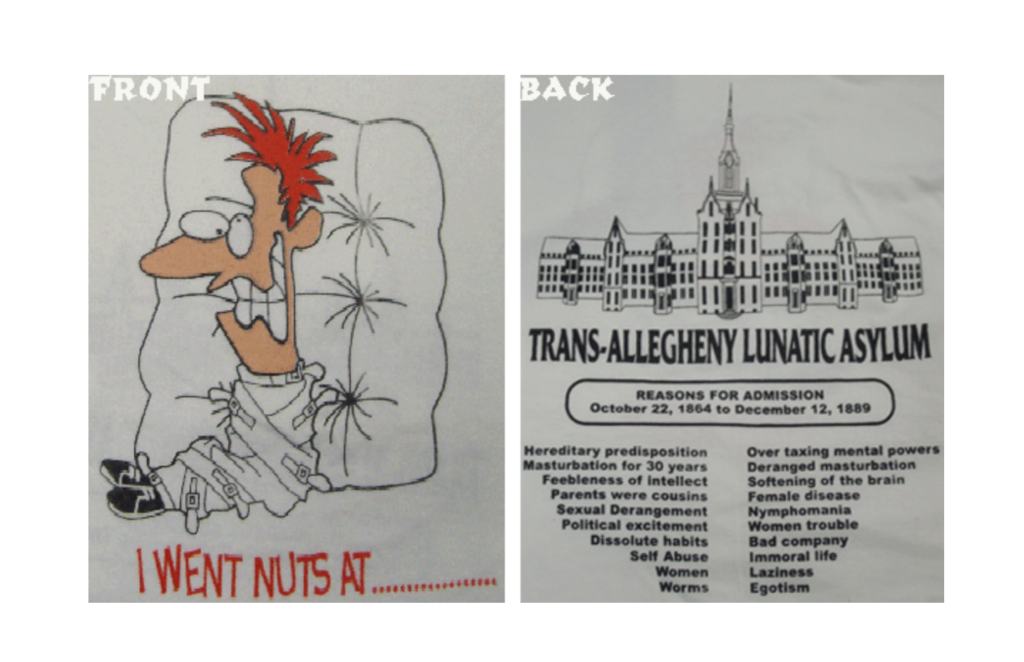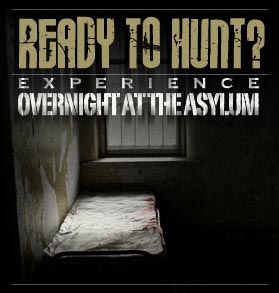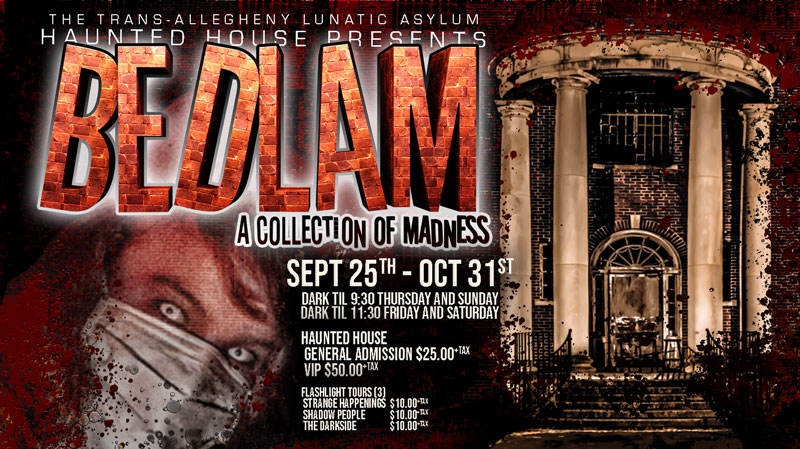The Creation of the Trans-Allegheny Lunatic Asylum
“In the halls of what once was the area’s most reputable hospital, a demented doctor has brought his patients’ nightmares to life. Society’s undesirable souls have been abandoned in the dark recesses of this once safe haven. Their sole purpose is to serve the good doctor and his sadistic experiments. Scratching and clawing their way through their new existence, patients succumb to delirious visions before becoming one of the doctor’s creations. Can you survive a journey into the Asylum, where the veil between realities is twisted.” [sic]
This is the description for the 2020 edition of the Trans-Allegheny Lunatic Asylum’s annual haunted house. In 2007, the current owners of the Weston State Hospital purchased the grounds and the buildings at public auction. They rechristened the building, using the name originally chosen by the Virginia State Legislature when the building was first commissioned in 1858. Over the years, the owners have worked to restore the building, which was in severe disrepair at the time of purchase. To do this, they have used the proceeds from their growing offerings of tours and events. These events range from straightforward tours that discuss the history of the building to fall carnivals to barbecue contests. And, of course, they include various paranormal tours as well as an annual haunted house.

I have not been to the Hospital since the current owners purchased the campus. As I discussed in the last post, I have my own complex feelings and memories and ghosts of the facility. I don’t have the desire to experience the ghosts they are packaging or the memories they have created. I also deeply believe that, just because you can find historical precedence for something, doesn’t make it right to use. I don’t think that there is any redeeming purpose of using the name Trans-Allegheny Lunatic Asylum. I don’t think that it teaches anyone about mental health stigma or the realities of the past. I think “lunatic” is a pejorative and sensationalist term that is incredibly disrespectful to the memories of the patients and employees of the Hospital.
Today, I’m not going to share the ghost stories that other have shared about the Weston State Hospital: about the ghostly sights and sounds that others say they have experienced. Rather, I want to discuss about what these ghost stories say about our culture, the morality of TALA packaging them for consumption, and how the history of human suffering can be commodified.
What Makes A Ghost?
So, what is it about TALA that is so scary? Why are events like the haunted house described above acceptable? In Western culture, we tend to believe that ghosts are created because of a tragedy. It could be a tragic and violent death. It could be the tragedy of lovers separated by death. Or it could be a classic case of “unfinished business”, in which the ghost has tasks to complete before it can be released to journey on to the next stage of existence. It makes sense, then, that places of great human suffering have ghost stories attached to them. TALA, Waverly Hills Sanatorium, West Virginia Penitentiary: all witnessed immense human tragedy. And all have parlayed that suffering into successful businesses.
What about other areas of immense suffering? The beaches at Normandy saw a blood bath, but there are no yearly haunted houses set up in the sand where thousands died. Granted, Halloween may not be as popular in Europe as it is here. What about in the United States? Gettysburg has no shortage of ghost stories. However, the National Park Service isn’t having its rangers dress up in bloodied Confederate uniforms to chase shrieking teenagers around Little Round Top. We would be appalled to witness someone desecrate these battlegrounds in such a way.
Clearly, while we agree on what creates a haunting, our society approaches the underlying tragedy very differently. We also treat the places of tragedy very differently. Gettysburg is a somber place. Sure, the gift shops sell a variety of toys and the visitor’s center is often filled with laughing families. On the battlefields, however, the tone is reserved and there are hundreds of monuments to the dead around the park. By many accounts the daytime historical tours of TALA are respectful and informative, focusing on the history of the building and of behavioral medicine throughout the Hospital’s life.
Memories and Respect
Once you begin investigating the paranormal offerings, the tone shifts. “Not for the faint of heart”, the ghost tours landing page announces. Several tours are advertised, including tours of the medical, forensics, and geriatrics buildings. Advertised as offered “by popular demand”, tickets cost $100 and tours last all night. And, of course, there is the yearly haunted house which plays of the “lunatic asylum” theme, in which the actors are healthcare workers or patients. This year’s haunted house tickets start at $25. The implications in all of these products are that these ghosts, and these actors, are especially terrifying because of their connection to mental illness.

This is where I most strongly feel that TALA crosses a line. To me, and to many others, having a haunted house at TALA isn’t any different from setting one up at Omaha Beach. We have known the people that lived and died and suffered there. Even in my case, where I have many fond memories of the Hospital, I also know that my memories are the exception to the rule.
The vast majority of people who have spent time there never saw it as a good chapter in their life. The patients who died there, alone, away from their family and friends certainly didn’t. The elderly men and women who slipped further into dementia in the geriatrics ward would never have wanted to die there. To have people run through this place of suffering, chased by caricatures of the real people who have worked and lived and died here, is appalling.

Why do we allow this? Why do we allow TALA to sell tragedy packaged as the paranormal? The answer, I fear, is devastatingly simple: the mentally ill are the Other, and are not valued as a result. The mentally ill are not one of Us and their suffering can thus be compartmentalized away from our suffering and emotions. Comparing TALA to battlegrounds, I think our country also prioritizes the memory and respect of those we feel have served our society in some way.
Do not misunderstand me: Allied forces at on D-Day and the soldiers at Gettysburg certainly sacrificed immensely for their country. However, in America we often assign worth to a human based not on his or her humanity, but on what they have “contributed to society.” For the workers and patients of Weston State Hospital, they did not contribute in a way we deem meaningful. Therefore, their memory is not sacred and the site of their suffering is open for amusement.
What is the answer? How do we approach a place like Weston State Hospital? Honestly, I don’t know. I don’t feel it’s my place to decide, because I didn’t suffer there. Perhaps, as beautiful as it is, the most respectful thing would be to let it slowly decay, collapsing over the years. This is the approach that many advocate for concentration camps like Auschwitz-Birkenau. Perhaps the new owners should focus solely on the history of the facility, using their platform to address mental health stigma and the dehumanization of the mentally ill. Sadly, I suspect this would not bring in nearly the revenue that the haunted house and ghost tours do.
All I know is that there has to be something better than a yearly exhibit of fake blood and actors pantomiming mental illness. Surely there’s a better way than that.

So you have never been to the dacilty to see that the history is handled professionally and accurately? And want to criticize for paraboemally investegating the place? Lady clutch your pearls some where else some people enjoy tge macabe history of places and tgere is an entire macabe tourism industry. Just because you dont agree with tge methods to keep a builfo g open doesnt mean its wring. Ylur facts are 100% false on how tge hordans run tbis place. There are no actors who portray ghosts during flashlight tours. A haunted house attraction in case you yavent been does include actors who intentionally scare people. Paranormal tours however no not invlude such things. Im sorry you did not purchase the building at auction? But what are yku doing to preserve a national histlric landmark? What are YOU doing to bring tphrism into and boost the lewis county economy…..i thought so. Ratger do sometbing to make a difference and bring economic stimulus to tge area or stop talki g about tbings that you admit you know notbing about.
I’m afraid you may have missed a lot of the nuance of the article and misinterpreted several key portions of it. Unfortunately, I’m having a hard time understanding most of your comment due to some spelling and grammatical errors so please correct me if I’m wrong. I did not claim that there are actors during the paranormal and flashlights tours—I am clear that those are during the haunted house. The larger point is to question how we should memorialize the people who have worked and lived and died here, and where a line is crossed. Just as it would be considered in extremely poor taste to have a haunted house at, say, the site of the former WTC towers or the beaches of Normandy, so I feel it is also in extremely bad taste to hold a haunted house in a place such as this. Why we privilege one over the other is a question for our society. I also, if you read the article again, acknowledge that the current owners have made significant improvements to the facility. As for whether or not we should preserve it? I don’t know. Again, I raise those dilemmas in depth in my posts and encourage you to go back and read it again.